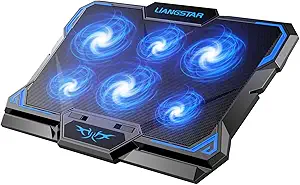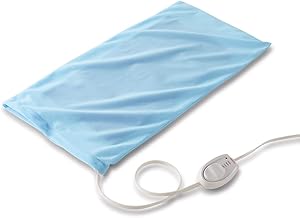The Ultimate Guide to Buying a Laptop Cooling Pad: Types, Features, and Tips
Overview
If you use your laptop for extended periods of time, you may have noticed that it can get quite hot. This is because laptops generate a lot of heat, and without proper ventilation, that heat can build up and cause damage to your device. Fortunately, laptop cooling pads can help keep your laptop cool and running smoothly. In this guide, we'll take a look at the different types of laptop cooling pads, key considerations when buying one, features to look for, and tips for using them effectively.
Types
1. Passive Cooling Pads: These pads use materials like aluminum or mesh to provide a flat surface for your laptop to rest on. They don't have any fans or other active cooling mechanisms, but they do provide some ventilation and can help dissipate heat.
2. Active Cooling Pads: These pads have built-in fans that help circulate air around your laptop and keep it cool. They're generally more effective than passive cooling pads, but they can be noisier and require power from your laptop's USB port.
3. Adjustable Cooling Pads: These pads allow you to adjust the angle of your laptop, which can improve airflow and reduce heat. They're often combined with active cooling mechanisms for even better performance.
Key Considerations
1. Size: Make sure the cooling pad is the right size for your laptop.
2. Noise: Consider the noise level of the cooling pad's fans.
3. Portability: If you plan to use your laptop on the go, look for a lightweight and portable cooling pad.
4. Power: Some active cooling pads require more power than others, so make sure your laptop's USB port can handle it.
Features
1. Fan Speed Control: Allows you to adjust the speed of the cooling pad's fans.
2. LED Lighting: Adds a cool visual effect and can help you see your laptop in the dark.
3. USB Hub: Provides additional USB ports for other devices.
4. Ergonomic Design: Can help reduce strain on your neck, back, and wrists.
Prices
Laptop cooling pads can range from around $10 to over $100, depending on the type and features.
Tips
1. Keep your laptop clean to improve ventilation.
2. Use your cooling pad on a flat, stable surface.
3. Don't block your laptop's air vents with the cooling pad.
4. Adjust the fan speed and angle of the cooling pad for optimal performance.
FAQs
Q: Do I need a cooling pad for my laptop?
A: If you use your laptop for extended periods of time or for demanding tasks like gaming or video editing, a cooling pad can help prevent overheating and improve performance.
Q: Can a cooling pad damage my laptop?
A: No, as long as you use it properly and choose a high-quality model that's the right size for your laptop.
Q: Can I use a cooling pad with any laptop?
A: Most cooling pads are designed to work with a range of laptop sizes, but make sure to check the specifications before purchasing.
Q: Can a cooling pad make my laptop run faster?
A: While a cooling pad can help prevent overheating and improve performance, it won't necessarily make your laptop run faster if it's already operating at its maximum capacity.










![ICE COOREL Gaming Laptop Cooling Cooler Pad with 6 Cooling Fans - Laptop Fan Cooling Pad with RGB Lights, Laptop Cooling Stand with 9 Height Adjustable, LCD Display and 2 USB Ports [2022 Version]](https://m.media-amazon.com/images/I/81IVCb4HSbL.__AC_SX300_SY300_QL70_FMwebp_.jpg)



